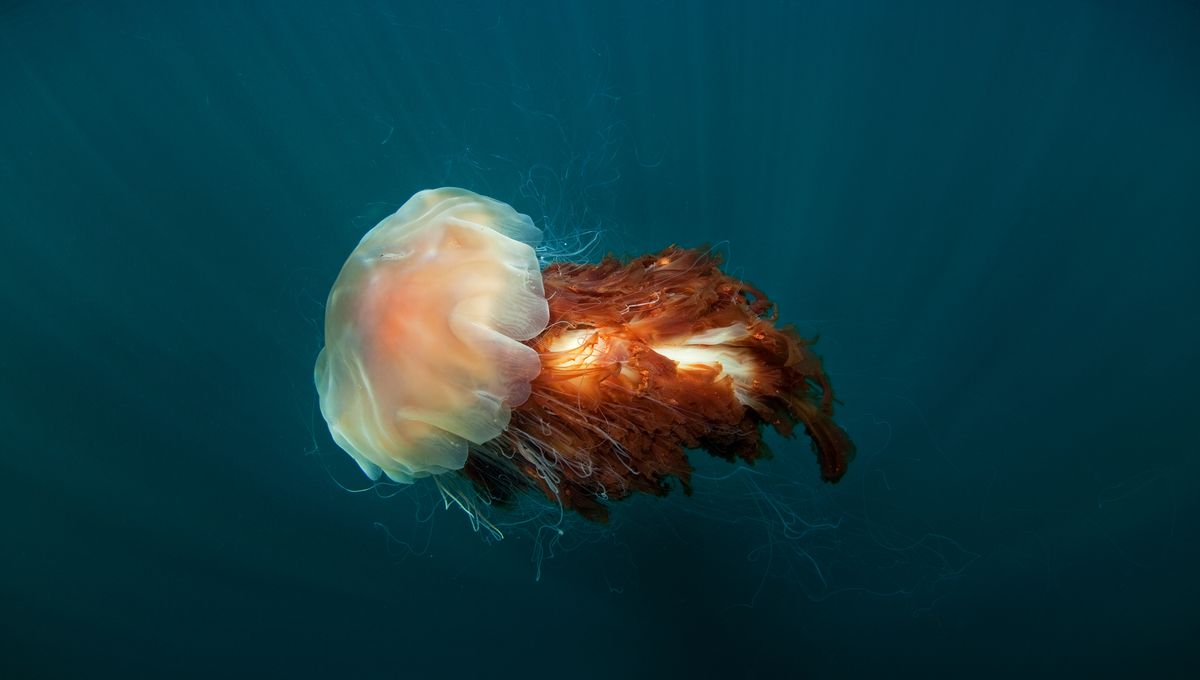
We often think of heavy animals as fairly solid; the blue whale, African elephants, and rhinos all seem fairly substantial because of their sheer volume. However, there is one creature that swims in Earth’s oceans that has its own heavy title, and yet is mainly made up of soft, squishy parts. Meet the lion’s mane jellyfish (Cyanea capillata).
The rest of this article is behind a paywall. Please sign in or subscribe to access the full content.
The lion’s mane jelly is a world record holder for being the heaviest jellyfish on Earth. Guinness World Records lists its estimated weight as 1 metric ton, making it by far the heaviest of all the jellies. The tentacles alone can grow to around 30.5 meters (100 feet), so long that they rival the length of the largest animal to have ever lived, the blue whale.
The name lion’s mane is given in response to these tentacles, which hang in a cloud around the bell of the jellyfish. These are arranged in eight clusters and could contain as many as 1,200 individual tentacles.
The tentacles are used to catch a range of creatures, including small fish and even other jellyfish. Lion’s mane jellyfish can deliver a painful sting through these tentacles, which contain large amounts of neurotoxins. They are even mentioned in Arthur Conan Doyle’s Sherlock Holmes short story The Adventure of the Lion’s Mane as causing a death.
There is some controversy surrounding whether the lion’s mane is the largest jellyfish, however. The biggest specimen was allegedly caught off North America by a geologist in 1856, with BBC Wildlife reporting them as describing “a specimen at Nahant, the disk of which had attained a diameter of 7.5 feet [2.3m], the tentacles extending to a length of more than 120 feet [37m].”
Many scientists are not convinced by this account, and some even consider Nomura’s jellyfish to truly be the largest. It can weigh 200 kilograms (441 pounds) and has a bell that can reach 2 meters (6.6 feet) in diameter. They grow exceptionally fast and can reach this size in just one year. These jelly giants are found in the Yellow Sea and the South China Sea; recent years have seen a massive population explosion, causing problems for fishers.
By contrast, Guinness World Records lists the 16 species of irukandji jellyfish as the world’s smallest; some of these tiny creatures’ bells measure only 5 centimeters (1.97 inches) across and possess just four tentacles. Despite this, these are some of the most venomous creatures and have even proven fatal to humans.
Source Link: Meet The Heaviest Jelly In The Seas, Weighing Over Twice As Much As A Grand Piano